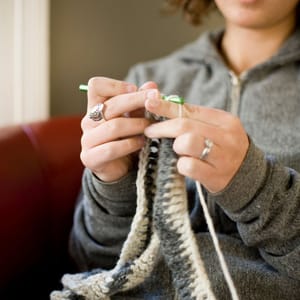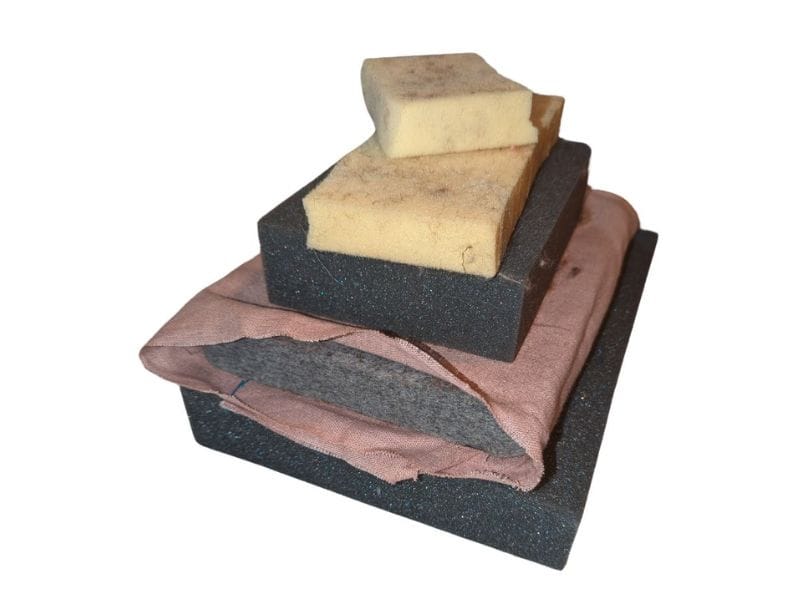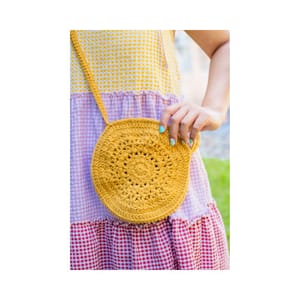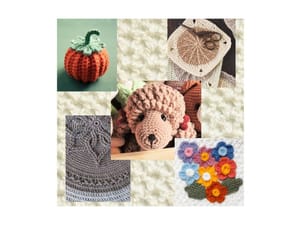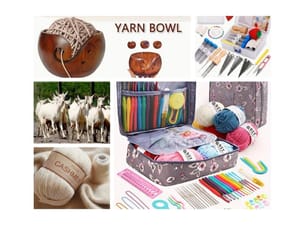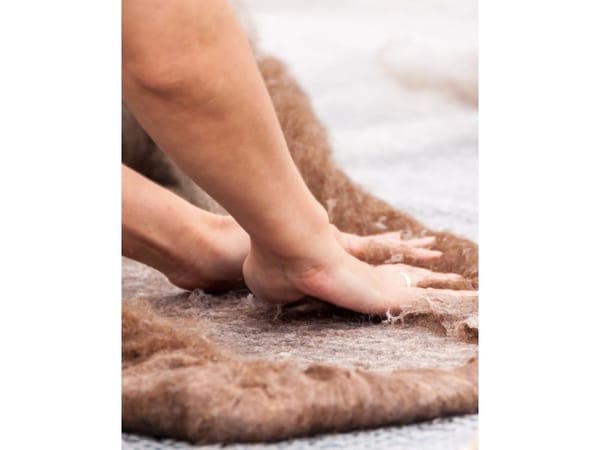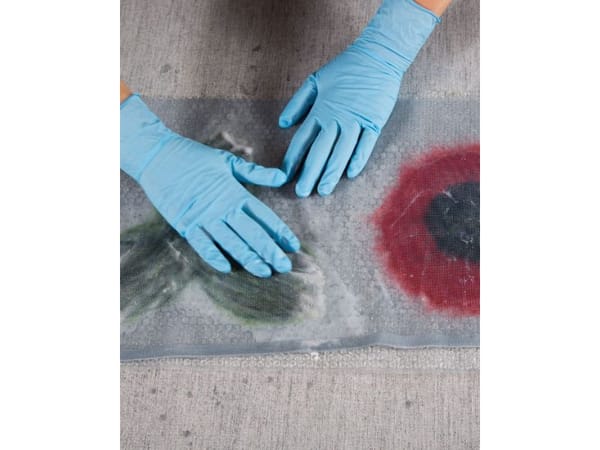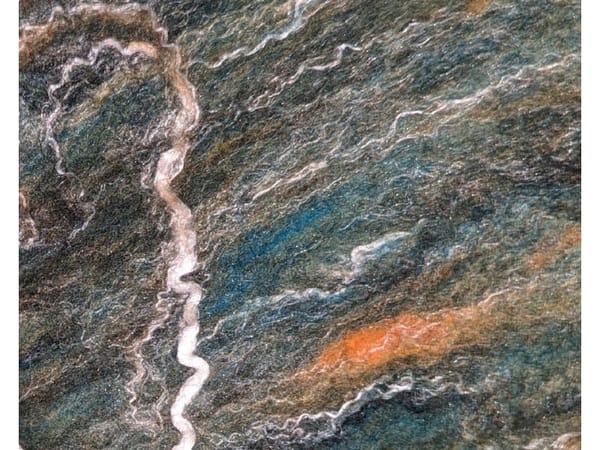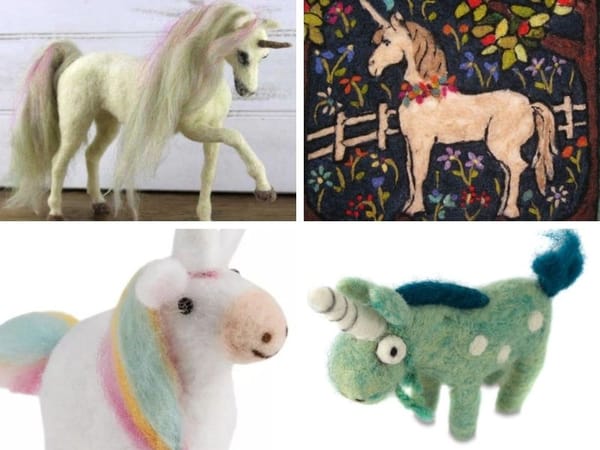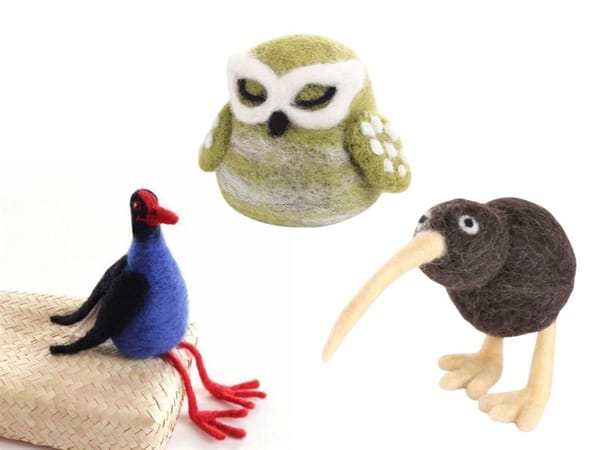Needle felting is a delightful craft that transforms wool into beautiful creations through repeated pokes with felting needles.
However, the success of your needle felting projects heavily depends on the quality of your needle felting mat.
This guide will walk you through the best needle felting mats available, their unique features, and how to choose the perfect one for your needs.
Key Takeaways:
- Choosing the right needle felting mat (aka: needle felting pads, needle felting foam) can significantly enhance your needle felting projects.
- Different types of needle felting mats, such as foam pads and wool mats, offer unique benefits.
- Understanding the characteristics of each mat type helps in making an informed decision.
Why a Good Needle Felting Mat Matters
A good needle felting mat is essential for providing a stable work surface for needle felting.
It supports your project, ensuring that your felting needles penetrate the wool properly without causing needle breakage.
The right mat can make the difference between a frustrating experience and a smooth, enjoyable crafting session.
Moreover, a high-quality needle felting mat protects your needles and your work surface.
It absorbs the impact of the needles, preventing damage to both the needles and the table or your lap that you’re working on. This protection is crucial for maintaining the longevity of your felting supplies.
Types of Needle Felting Mats

Foam Pads
Needle felting foam pads are popular among needle felters due to their lightweight and affordable nature.
These mats provide a soft yet supportive surface, making them ideal for beginners.
The foam pad's thickness and density are crucial factors to consider, as they determine the mat's durability and effectiveness.
However, foam pads tend to wear out over time, especially with repeated pokes. They may also leave small foam particles in your wool, which can be a nuisance. Despite these drawbacks, foam pads remain a favorite for many due to their ease of use and cost-effectiveness.

Wool Mats
A wool mat has a larger flat surface and is another excellent option for needle felting.
Made from solidly felted wool, these mats offer a firm and durable surface. They are eco-friendly and provide great support for your projects, ensuring that your felting needles penetrate the wool without causing needle breakage.
Wool mats are particularly beneficial for flat felting and creating wool paintings.
Their dense structure allows for precise needlework, making them ideal for detailed projects.
Additionally, wool mats tend to last longer than foam pads, providing better value in the long run.

Choosing the Right Needle Felting Mat
When deciding on the best needle felting pads, consider the type of projects you will be working on.
- For instance, a wool mat might be the better choice if you often create flat pieces or wool paintings.
- On the other hand, if you prefer working on separate pieces or 3D shapes, a foam pad could be more suitable.
Another factor to consider is the mat's size.
A larger needle felting pad provides more space for your projects, while a smaller mat is more portable and easier to store.
Think about where you usually work and how much space you need for your needle felting projects.

Benefits of Using a Wool Felting Pad
A wool felting pad offers several advantages over other types of mats.
- Firstly, its dense structure provides the perfect amount of support for your felting needle, reducing the risk of needle breakage. This support is especially important for detailed work, where precision is key.
- Secondly, wool felting pads are eco-friendly and made from natural materials. This makes them a sustainable choice for crafters who are conscious of their environmental impact.
Additionally, wool mats tend to last longer than foam pads, offering better durability and value for money.

Foam Block vs. Wool Mat: Which is Better?
The choice between a foam block and a wool mat ultimately depends on your personal preferences and the type of projects you work on.
Foam blocks are lightweight and easy to handle, making them ideal for beginners or those who prefer a softer surface.
On the other hand, wool mats provide a firmer and more durable surface, making them better suited for detailed work and flat felting. They also tend to last longer, offering better value in the long run.
Consider your specific needs and preferences when choosing between these two options.
Maintaining Your Needle Felting Mat
Proper maintenance of your needle felting mat is crucial for ensuring its longevity.
For foam pads, avoid using excessive force when poking, as this can cause the foam to break down more quickly. Regularly clean the mat to remove any wool fibers or foam particles that may accumulate.
For wool mats, gently brush off any loose fibers after each use. Avoid getting the mat wet, as this can cause it to lose its shape and density. With proper care, your needle felting mat can last for many projects, providing a reliable and supportive surface for your crafting needs.

Case Study: Tilly's Needle Felting Experience
So, I have used several different types of needle felting pads.
When I first started and didn't realize I would stick with this craft, I cut out strip pieces of an old foam mattress topper.
This is not my favorite, but I used it for my first few projects. The mattress topper needle felting pad breaks down easily. It can leave a crater where the needle repeatedly pierces the foam. It does transfer foam particles into my felting projects and removing them requires a steady hand and tweezers. It's also not safe as it does enable the felting needles to go all the way through. The needles pierce my fingers or hit the work surface (table) and easily break.
Frustrated I decided to purchase a kit so I could get the foam pad that came with it. This type of needle felting pad is much sturdier than the mattress topper.
Reluctantly I purchased a solid wool needle felting pad. The difference was night and day! The wool mat provided a firmer surface, allowing me to create more detailed and precise work. It also has great durability, lasting much longer, which saves money in the long run.
The importance of choosing the right needle felting pad makes all the difference, but I still use all of them.

For example, I wet felted wool to make fabric that I would use for making a coin purse. For this felting project, to achieve the rounded shape the way I wanted it, I placed the foam mattress pad in the curvature, and it made finishing the piece off much easier.

I still use the white foam pad that came in the kit for small pieces that would get ruined if they felted into a solid wool pad.
The solid wool pad is my favorite by far! Though not ideal for tiny projects it is ideal for everything else. I wrapped mine in a piece of linen for easy cleaning and to make it last longer. And the best part, I haven't broken a felting needle since.
I don't suggest using a sponge or an old foam pillow. I haven't used a brush with stiff bristles yet, but I have been curious about making my own mat from a piece of linen filled with dried rice.
Wrapping Up
As we learned, choosing the best needle felting mat is crucial for the success of your needle felting projects.
Whether you opt for a foam pad or a wool mat, consider factors such as durability, support, and the type of projects you work on.
By selecting the right mat, you can enhance your crafting experience and create beautiful, detailed pieces with ease.

What is the best needle felting mat for beginners?
For beginners, a foam pad is often the best choice due to its lightweight and affordable nature. It provides a soft and supportive surface, making it easier to learn the basics of needle felting.
How do I clean my needle felting mat?
To clean a foam pad, gently brush off any loose fibers and avoid using excessive force when poking. For wool mats, brush off loose fibers after each use and avoid getting the mat wet to maintain its shape and density.
Can I use a regular foam block for needle felting?
While a regular foam block can be used for needle felting, it may not provide the same level of support and durability as a specialized needle felting mat. Investing in a high-quality needle felting mat can enhance your crafting experience and protect your supplies.



Images Source: Personal Collection, The Woolery, and Michaels

